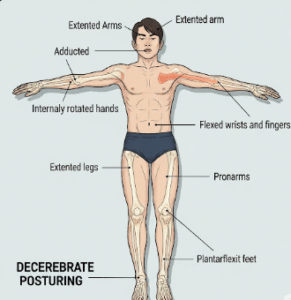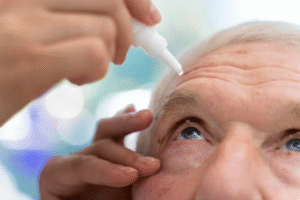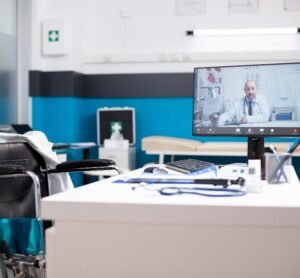Telemedicine is rapidly transforming how people in Korea access healthcare. Once seen as a futuristic concept, it’s now becoming a key part of hospitals, clinics, and even home care. The shift began during the COVID-19 pandemic, when digital consultations became a necessity, but it has continued to grow as patients and doctors realize the benefits of virtual care.
➤ Expanding Access to Healthcare
Telemedicine has made medical care easier to access and more convenient than ever before. It’s especially valuable for:
- ➤ People in rural or remote areas who can now connect with top specialists without traveling long distances.
- ➤ Elderly patients or those with mobility challenges, who can receive advice and follow-ups from home.
- ➤ Busy professionals, who can save time by consulting online instead of visiting a clinic.
With Korea’s advanced digital network and widespread smartphone use, nearly anyone can join an online consultation. This has helped narrow the gap between urban and rural healthcare, ensuring equal access to medical services.
➤ Technology Powering the Change
The success of telemedicine in Korea depends heavily on technology. Several innovations have made remote healthcare possible and effective:
- AI (Artificial Intelligence) assists in early diagnosis by analyzing medical images and patient data.
- Wearable devices track vital signs like blood pressure, oxygen, and glucose levels in real time.
- Electronic Health Records (EHR) let doctors securely access patient information across hospitals.
- AI chatbots and virtual assistants help patients manage medications and appointments.
These tools give patients more control over their health, while allowing doctors to monitor and guide care continuously.
➤ Post-Pandemic Transformation
During the COVID-19 pandemic, Korea temporarily lifted restrictions on remote consultations to reduce hospital crowding. This led to a surge in telehealth adoption. Both patients and medical professionals discovered how practical and safe online consultations could be.
Today, the Ministry of Health and Welfare continues to explore policies to make telemedicine a permanent part of the healthcare system. The pandemic proved that remote healthcare isn’t just an emergency solution—it’s a modern way to keep people connected to care.
➤ Empowering Patients and Families
Telemedicine is changing the relationship between doctors and patients. It encourages people to take an active role in managing their own health.
Patients with chronic conditions can share their daily readings—like blood sugar or blood pressure—through an app. Doctors can respond with adjustments or advice instantly. Families caring for elderly relatives can track health data through connected devices, reducing the need for constant hospital visits.
This shift from a hospital-centered model to a patient-centered one is helping Koreans stay healthier and more informed.
➤ Telepsychiatry and Mental Health Support
Mental health care in Korea has also benefited from telemedicine. Online counseling and telepsychiatry platforms allow people to speak to certified therapists from the privacy of their homes.
For many Koreans, especially younger adults, this removes the fear of stigma and makes therapy more approachable and convenient. Hospitals and startups are working to expand online mental health services and include them in national insurance coverage.
➤ New Opportunities for Clinics
Telemedicine isn’t just helping large hospitals—it’s also creating new opportunities for local clinics. Many small clinics now use:
- ➤ Online appointment systems for easier scheduling.
- ➤ Video follow-up consultations for ongoing treatment.
- ➤ Digital prescriptions that allow pharmacies to prepare medicines in advance.
By combining virtual and in-person care, clinics can improve efficiency, attract new patients, and offer a smoother experience for everyone.
➤ The Business of Telehealth
Telehealth has also become a fast-growing business sector. Korean startups and tech companies are partnering with hospitals to create seamless platforms for virtual care. Popular apps like Doctor Now and GoodDoc allow patients to speak to licensed doctors, receive prescriptions, and even get home delivery of medicines.
This system is also expanding Korea’s medical tourism industry. International patients can consult Korean doctors before traveling, plan treatments, and receive follow-up care remotely. It’s helping Korea strengthen its reputation as a leader in digital healthcare innovation.
➤ Challenges and Considerations
Even with its success, telemedicine faces some important challenges:
- ⚠ Data security: Protecting patient information from cyber risks is a top priority.
- ⚠ Insurance policies: Not all telehealth services are fully covered yet.
- ⚠ Technology barriers: Some older adults still find it hard to use apps or video calls.
- ⚠ Clinical limitations: Certain tests and diagnoses still require in-person visits.
These challenges must be addressed carefully so that digital care remains safe, reliable, and inclusive for all.
➤ Government Initiatives and the Future
The Korean government is gradually developing a long-term vision for telemedicine. It supports pilot programs, invests in AI-based health platforms, and works to improve regulations for telehealth coverage.
Experts believe that as systems mature, telemedicine will be fully integrated into the National Health Insurance Service (NHIS), allowing every citizen to benefit from virtual healthcare. Korea’s experience with technology, combined with strong public health policies, gives it a solid foundation for global leadership in this field.
➤ Conclusion
Telemedicine is no longer a temporary solution—it’s a permanent pillar of modern Korean healthcare. It connects people with doctors wherever they are, reduces unnecessary hospital visits, and empowers patients to manage their health proactively.
By embracing digital technology, Korea is building a healthcare system that is smarter, faster, and more human-centered. The growing role of telemedicine shows that the future of healthcare is not just about hospitals—it’s about connection, innovation, and the well-being of every individual.













